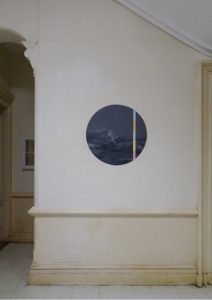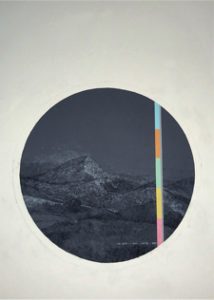Foreword. 1-9
1. Drawing can be considered a form of mark making.
2. Drawing can also be thought as a practice that implies a material or immaterial gesture, an idea that is thrown onto the world—exceeding the paper, the wall, or any other surface or space that it might occupy.
3. In that sense, drawing could be considered performative, as the process of performing an idea, which becomes a gesture and takes on a particular aesthetic form.
4. At the same time, the existing gap between the idea (or intention) and its materialization makes failure a fundamental component to any drawing (or any artistic creation). So much so that it seems that one can never get to what she is looking for—she is either too early or too late.
5. The performance always fails because art inhabits the time and space of that which is ineffable, of that which can never be made explicit.
6. In that sense drawing can be considered an endless form of becoming, a specific form of knowledge that brings about that which does not yet exist.
7. One could then argue that art, as a catalyst for thought, as the bringing out of the non-existent, happens at a moment suspended in time, a moment away from any chronological order.
8. The consideration of the time of the art(work) as suspended acknowledges its ability to exceed finitude and its capacity to resist the strategies of neutralization that govern our capitalized existence.
9. The never-ending task is to keep art away from normalization and consumption. A moment suspended in time. After all, every artistic practice is fragile and vulnerable. One can never quite grasp it. And there lies its greatness.
January 1 1950
January 1 1950 is used in archeology and geology to specify when events in the past occurred. It marks the origin of radiocarbon dating and is considered the commencement date of our present era. The massive nuclear weapon testing in the 50s altered the proportion of the carbon in the atmosphere, which made dating after unreliable. On January 1 1950 everything changed: the air became explicit and time was never the same.

Makhonjwa
Makhonjwa Mountains. Barberton Greenstone, Swaziland / South Africa. 3.5 Billion Years Old (Figure 1) is a wall drawing located in Saint Mary’s Grand rectory, in the Lower East Side of New York city. The drawing occupies part of the wall in the rectory’s reception hall. It depicts the oldest mountain range on earth, located in the border between Swaziland and South Africa, formed 3.5 billion years ago. A number that exceeds my capacity for understanding: an ancestral time both geological and theological that exceeds human existence. A time that seems ungraspable, as ungraspable as art might be.
The piece’s rendition accounts for a way of drawing that I developed after noticing the snow falling against the grey New York sky last winter. At the time it seemed like the white flakes, white falling lines, drew on the sky—rendering the air visible. They, the flakes, were creating the images and so the white flaky strikes appeared to be the perfect mechanism for capturing air. And time. And for image making.
White flakes, white strikes, white lines, then.
From that moment on I adopted this form of mark making: a succession of white slanted lines, moved by the breeze. Later on, black lines also emerged in reference to traditional etching and how different shades of gray might be obtained from a single colour. I was interested then, as I am still now, in the depiction of the basic elements of life, air and water, using minimal elements of representation, dots, lines and colours.
During this time, a second element started to appear in my drawings: a colour scheme on the side. This is a direct reference to weather maps, which address specific atmospheric phenomena through a colour chart. In my case the colours are both a possibility for completing the image and a self-referential notation—they point to the colours I have consistently used in my work: blue, orange, green, yellow and pink.

Mine was, and is, a search for both the origins of life and of art.
Afterword. 1-9
1. Michael Serres (Serres 1995: 57) claims that time does not flow according to a plan or a line, and does not unfold in a straight line.
2. In other words: time is not geometrical.
3. On the contrary: time percolates. It is organised in a chaotic manner according both to currents and counter-currents. Time unfolds, twists, expands and evolves multidimensionally and in a chaotic manner, like the ocean or a river.
4. In other words: time is topological.
5. In a conversation with Bruno Latour, Serres (Serres 1995: 58) reminds us how the French language uses the same word for time and weather: le temps.
6. Meteorological weather and time seem to collide in one fluctuating and turbulent image, away from linear over-simplifications.
7. If we consider a time that unfolds multidimensionally and in a chaotic manner it seems natural to accept that the events and things that exist within culture can be separated in time and yet be close conceptually and aesthetically. This proximity allows unpredictable forms of knowledge and narrative to emerge and flourish.
8. Chaos points out unpredictability, which disavows the necessary stability of natural laws or causality. There are no immutable eternal laws of becoming, no way to state definitively how things or events will unfold.
9. Art grapples with such unpredictability and creates the conditions for something to happen. What this might be is of course, ungraspable. And indescribable. And one is never quite apt to it, being always too early, or too late. And again, there lies its greatness.
References
Deleuze, G; Guattari, F (1994), What Is Philosophy, London, New York: Verso.
Meillassoux, Q (2010), After Finitude: An Essay on the Necessity of Contingency, London, New York: Continuum International Publishing Group.
__ Longo, A. (ed) (2014), Time Without Becoming. Milan: Mimesis International.
Serres M; Latour, B (1995) Conversations on Science, Culture, and Time. Ann Arbor: University of Michigan Press.
